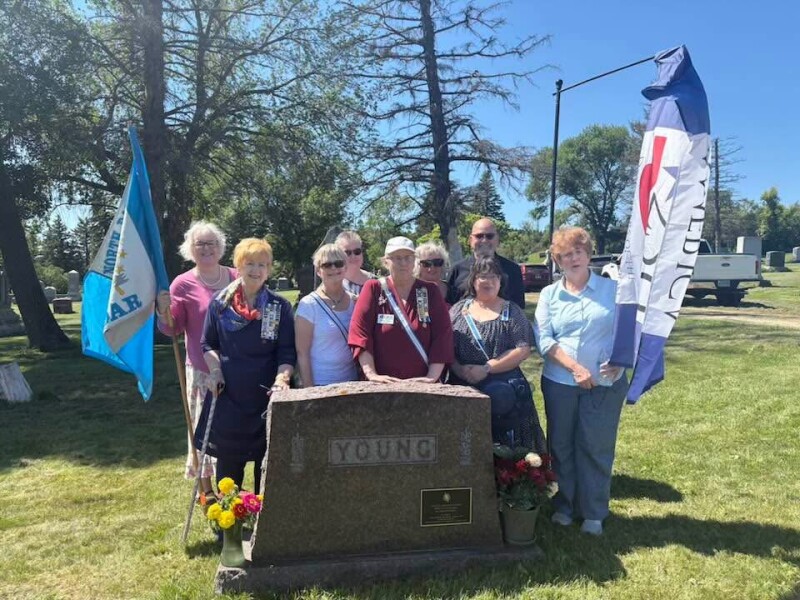Members of the North Dakota chapter of the Daughters of the American Revolution (DAR) gathered on August 22, 2023, in Valley City to honor a pivotal figure in their organization’s history, Augusta Freeman Young. The occasion marked the dedication of a new marker at Woodbine Cemetery, replacing one that had been damaged. Young, who played a crucial role in establishing DAR in North Dakota, helped solidify its presence in the state over a century ago.
The DAR was founded in Washington, D.C., on October 11, 1890, by four women whose ancestors fought in the Revolutionary War. Denied membership in the male-only Sons of the American Revolution, they established their own society dedicated to historic preservation, education, and patriotism. While the organization has deep roots in American history, it is often misunderstood, oscillating between being seen as a political force or merely a social club.
Young’s contributions to the DAR began in 1914 when she joined the organization and revitalized its North Dakota chapter. Born in 1871 in St. Charles, Michigan, she traced her lineage to the esteemed Adams family of Massachusetts. After moving to Valley City, she formed the first North Dakota chapter, Sakakawea, in 1915 and served as the state’s first regent. Under her leadership, the organization expanded to eight chapters and increased membership to over 300 by 1924. Young passed away in 1949 and was laid to rest in Valley City, where her legacy continues to be honored.
The recent dedication of the memorial marker was a reminder of the ongoing commitment of DAR members to preserve history. According to Sandy Sidler, the honorary state regent, the old marker was discovered damaged and required approval from Young’s family and the cemetery for replacement.
For over a century, DAR has contributed to the preservation of history in North Dakota by placing markers, supporting museums, and presenting artifacts, including General George Custer’s rocking chair to Fort Abraham Lincoln. Members have also played significant roles in relocating Theodore Roosevelt’s Maltese Cross cabin to Theodore Roosevelt National Park. Sidler noted, “The mission of DAR is service — exactly. That is totally what we do.” Current initiatives include sponsoring wreaths at the Fargo National Cemetery, supporting Honor Flights, and providing Quilts of Valor.
DAR emphasizes its nonpartisan stance, maintaining that while members may hold personal political views, the organization does not endorse any candidates or parties. This commitment to service remains steadfast as the demographic of its membership has transformed. A stark contrast can be seen in group photos from the past and present. While earlier members were often older women in formal attire, today’s membership is diverse, encompassing women of various ages and backgrounds.
Sidler highlighted the organization’s inclusivity, stating, “Actually, we are an equal and diverse group right now.” The definition of “patriot” has expanded, allowing descendants of African American and Native American patriots to join. This change acknowledges the contributions of groups like the Oneida Nation, who supported George Washington’s troops at Valley Forge. Additionally, DAR has recognized Mary Hemings Bell, who was enslaved by Thomas Jefferson, as a patriot, thereby making her descendants eligible for membership.
As DAR looks toward the future, it aims to prepare for the 250th anniversary of the United States in 2026. Sidler indicated that the organization plans to offer grants to local communities to celebrate North Dakota’s statehood anniversary while encouraging public engagement in the upcoming festivities.
The legacy of Augusta Freeman Young serves as a foundation for the organization’s current and future activities. Sidler expressed gratitude for Young’s contributions, stating, “Without her, the North Dakota DAR may not have thrived the way it did.” The dedication ceremony not only restored a physical marker but also reignited a commitment to preserving history and honoring those who have contributed to it.
As members of the DAR move forward, they continue to bridge the past with the future, ensuring that the legacy of their founders is remembered and celebrated. For more information on membership or programs, visit the national DAR website at www.dar.org.
